Best Garmin watch 2024
These are the best Garmin watches across the Venu, Forerunner, Instinct, Epix, and other Garmin lineups, for every type of athlete.
We've chosen the best Garmin watches for every type of athlete. Whether you care more about battery, data, training guidance, comfort, style, or price, Garmin sells dozens of different watches that share a lot of core software and design elements, but you have to choose how much to spend to get the best materials and serious training software.
Beginners to Garmin watches should look at its six main product brands: Epix, Fenix, Forerunner, Instinct, Venu, and Vivoactive. You'll also find specialized models targeting golfers (Approach), divers (Descent), sailors (Quatix), and so forth, but we've focused our list on the best mainline Garmin watches.
We'll break down the differences in types below, but you can count on fantastic battery life, superb GPS tracking and HR data, and useful coaching tools for self-guided athletes. From high-end models like the Venu 3 or Forerunner 265 to reliable budget picks like the Forerunner 165, we've chosen the best Garmin watch for every need and price point. Let's dive in!

Michael is Android Central's resident expert on fitness tech and wearables, having tested dozens of smartwatches from Garmin, Fitbit, Samsung, Apple, COROS, Polar, Amazfit, and other brands. The Garmin Forerunner 965 is his current daily watch, and he's also reviewed most of the Garmin watches below.
At a glance

Best overall
Thanks to its AMOLED upgrade, dual-frequency GPS tracking, long battery life, and training readiness software, the Forerunner 265 claims the best Garmin watch title.
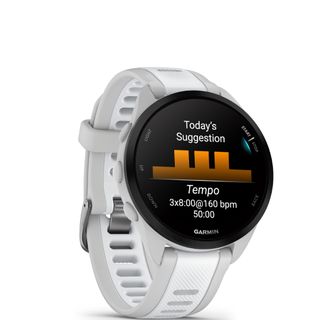
Best affordability
Swooping in at just $50 more than the older Forerunner 55, the Forerunner 165 offers fantastic new features and the perk of an AMOLED display.

Best lifestyle
Most Garmin watches aren't that "smart" compared to bigger brands. The Venu 3 closes the gap with a mic & speaker for calls and voice assistants, plus smarter notifications.
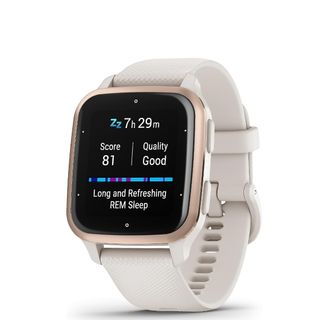
Best mid-range
The Venu Sq 2 has a more mainstream and lightweight design than most Garmin watches, with all the core Garmin software suite, tap-to-pay, music storage, and more for less.
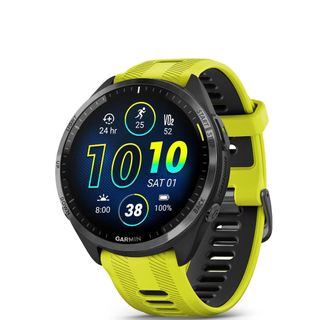
Best premium
Take the Forerunner 265 and add topographical maps, real-time stamina, hill score training, and other upgrades, plus longer battery life and a stylish titanium bezel.
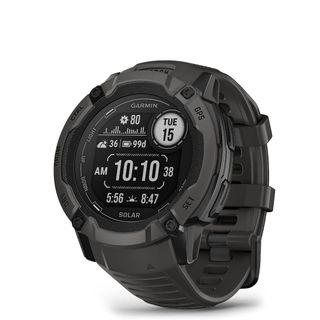
Best battery
Thanks to solar charging, this can offer weeks upon weeks of battery life. Plus, it has a built-in flashlight to illuminate your path and an ultra-durable design for the trail.
Load the next 3 products ↓
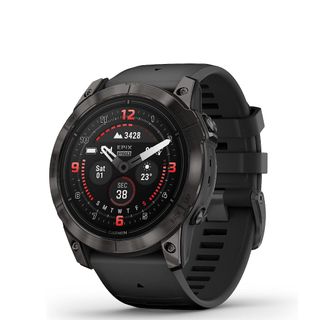
Best for big spenders
If money is no object and you truly want every Garmin software tool as soon as it becomes available, plus an AMOLED display with comparable battery to the Instinct 2X, look here.
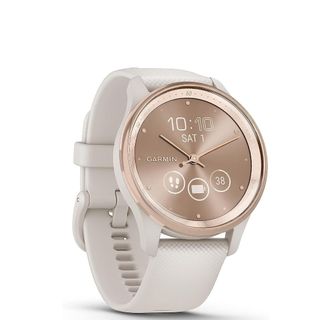
Best hybrid
Do you want the core Garmin software suite but in a more aesthetically pleasing package? Start with this sleek hybrid watch with a mini-LCD display and either silver or gold finishes.

Best for kids
Adults aren't the only ones that should establish good fitness habits. The Bounce encourages kids to work out, while giving parents a way to contact them without needing a cell phone.
Best overall

Specifications
Reasons to buy
Reasons to avoid
Not every Garmin user needs hardcore running tools like the Forerunner series offers. But the Forerunner 265 doesn't hold back for runners, cyclists, and swimmers who need guidance on when to push themselves or focus on recovery, and it finally replaces the efficient, hard-to-read MIP displays of most Garmin watches with a beautiful AMOLED — without hurting battery life too much.
As our Garmin Forerunner 265 reviewer explains, this watch is essentially a Forerunner 255 Music with a better display and a couple new software tricks. If you don't need the AMOLED, music storage, or Training Readiness, then you can save $100 and get an equally excellent experience with key tools like Garmin Coach, ultra-accurate multi-band tracking, acute load data, and heart rate variance (HRV) data.
That being said, the Forerunner 265 is just so much easier to read without eye strain while indoors, as well as easier to navigate through menus thanks to the touchscreen. And Training Readiness is our favorite new Garmin tool: rather than just judge your energy level based on sleep stats, it looks at your training load, recovery time, HRV, stress, and VO2 Max to guide you on when to work out or rest.
Plus, the Forerunner 265 is one of the rare watches with wrist-based running dynamics, meaning you can use it to check your cadence, oscillation, stride length, and other data without needing to wear the optional Garmin Pod accessory on your shorts.
We consider the Forerunner 265 the best running watch available across all fitness brands; its only real competition is the fantastic, expensive Forerunner 965 further down on this list. Most runners and/or Garmin fans can save the extra cash and stick with the 265, however.
Best affordable
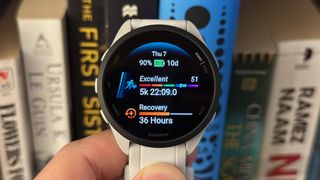
2. Garmin Forerunner 165
Specifications
Reasons to buy
Reasons to avoid
Picking the best Garmin watch depends largely on your wallet, since almost none of them are especially "affordable" compared to the price of most fitness watches. For years, we recommended the $199 Forerunner 55; now, the new Forerunner 165 is so much better for $50 extra that we have to recommend the later model.
Like the Forerunner 55, you get all the core running essentials like Garmin Coach, Pacepro, cadence alerts, race predictor, recovery advisor, Body Battery, and Intensity minutes. But the Forerunner 165 adds a more advanced and accurate HR sensor capable of tracking your stress levels, plus blood oxygen data, a compass for breadcrumb navigation, and an altimeter for elevation data.
Plus, with this new model, you upgrade from a dim MIP display to an AMOLED touchscreen, while keeping the same thin, lightweight design. You do lose three days of battery life (14 vs. 11), but only one hour of GPS tracking (20 vs. 19), which arguably matters more.
Compared to the Forerunner 265, the Forerunner 165 misses out on dual-band GPS tracking, a gyroscope, multisport tracking, and a few key training metrics like Training Readiness and Training Load that we really appreciate. But the Forerunner 165 offers a streamlined experience for those who follow a Garmin Coach training plan or a self-guided plan, and don't need Garmin to tell them how in-shape they are.
We're still reviewing the Forerunner 165, but after a week of testing, it has lived up to our expectations thus far. The all-systems GNSS data is respectably accurate and it's more comfortable to wear than the pricier Forerunners.
Best lifestyle

Specifications
Reasons to buy
Reasons to avoid
Garmin watches may never be known for their "smarts," compared to a Wear OS watch or even a Fitbit with Google apps. The Garmin OS isn't built for anything too complex. But if you want a Garmin watch that's as close to a traditional smartwatch as possible, you want the Garmin Venu 3.
You get a bright 1.2- or 1.4-inch AMOLED touchscreen depending on which size you buy, plus three buttons — one more than the Venu 2 — used for shortcuts like summoning music controls or Garmin Pay. Also better than the Venu 2, it has a built-in mic and speaker, giving you the ability to take phone calls or ask your voice assistant questions with your phone stuck in your pocket.
After reviewing the Venu 3, we had a ton of praise for how it brought more smarts to the Garmin OS, making apps more accessible, adding a large font mode and wheelchair mode, and even a keyboard for text responses (only on Android) if you're too lazy to grab your phone. Most importantly, it has revamped sleep coaching tools that push you towards better sleep habits, plus an enhanced Body Battery graph that shows exactly what activities or life choices are tiring you out.
Its stainless steel bezel, more svelte design than your typical Garmin, gorgeously large AMOLED, and the built-in ECG readings (plus skin temperature in the future) make it more appealing to mainstream buyers.
For serious athletes, it has thousands of animated exercises, recovery time and workout effect screens after your exercise, accurate multi-satellite system tracking, and other training tools to guide you. It's not as robust as a Forerunner, but it no longer feels as barebones.
Best mid-range
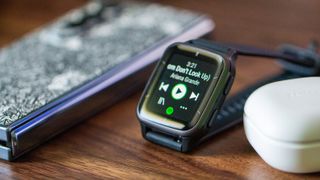
Specifications
Reasons to buy
Reasons to avoid
Those who want a bit of everything Garmin offers without breaking the bank, designed with an Apple Watch-like squircle design, will appreciate the Venu Sq 2. As the name suggests, this is a square version of the Venu 2, with a beautiful 1.4-inch AMOLED display instead of the 1.3-inch LCD on the original Venu Sq.
It doesn't have the mic/speaker combo of the Venu 3, nor some key features on most Venu models: Garmin removed the altimeter for stair tracking and elevation measurement, the gyroscope for a muscle map feature, the exercise guide animations, and live watch faces. You'll also have to pay $50 extra for the Venu Sq 2 Music to get music storage and a wi-fi connection.
Still, it's rare to find a Garmin watch at this price point that isn't compromised in some way, and our Venu Sq 2 reviewer even called it the "Goldilocks smartwatch" because of how it struck the right balance between affordability and packing in enough features. You get the essentials like Body Battery, sleep score, HIIT timers, Garmin Coach, and preloaded workouts to guide you to success.
As an alternative, you may want to look into the brand-new Garmin Vivoactive 5, which has a lot of the same upsides and downsides for the same price as the Music Edition, but with a more traditional Garmin look and some of the Venu 3's new software tricks. We're currently working on our review and will have an updated recommendation next month.
Best premium
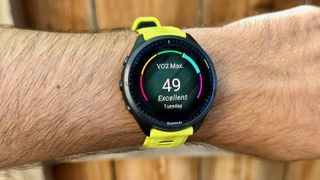
Specifications
Reasons to buy
Reasons to avoid
In a world where money wasn't a consideration, the Garmin Forerunner 965 would be the top option on this list. It's the best Garmin watch we've tested. Unfortunately, it's also $600, and while it justifies that price for serious runners and cyclists, most people don't have the budget for the 965 and can happily make do with the 265 or another pick.
With that preamble done, let's dive into what makes it such a fantastic watch. Much like the 265, the 965 is a refreshed Forerunner 955 with an AMOLED upgrade; unlike the 265, this isn't just important for readability. Garmin reserved its high-resolution maps for the high-end Forerunners, but they looked dull on the 955; with the 965, you get gorgeous topographical maps on which you can follow round-trip pathing or see the next trailhead automatically. You also get Strava Live Segments, a great way to motivate you to hit PRs.
Our Garmin Forerunner 965 review had almost nothing but praise for the bright display with better anti-reflective coating than the 265, how it lasts just longer in the "highly accurate" SatIQ GPS mode than the 265 does in GPS-only mode, and how it has all of the running training data you could possibly want. Most people don't need real-time stamina, Endurance and Hill scores, advanced cycling dynamics, MTB Grit & Flow, and other premium 965 exclusives; they're just nice to have.
Why skip the Forerunner 965, aside from the price? Even though the software is much more advanced than the Venu 3, the latter gives you a mic & speaker, plus the promise of future ECG and skin temperature readings the 965 will never get. You also won't find a 965S option for smaller wrists.
Still, compared to the Fenix or Epix lineups, we feel that the Forerunner 965 has 99% of what most athletes will need for hundreds less and at a significantly more comfortable weight.
Best battery
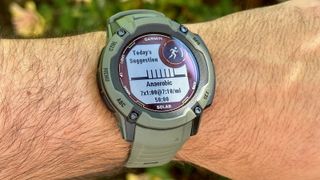
Specifications
Reasons to buy
Reasons to avoid
Most new Garmin watches these days last upwards of two weeks, but this doesn't take GPS use into account. They actually need a recharge every few days to a week if you're regularly active. It's not nearly as bad as the daily recharge required by a Galaxy or Apple Watch, but if you really want a watch that'll last weeks even with daily workouts, the Instinct 2X Solar is unmatched.
We'll let the numbers speak for themselves: the Instinct 2X Solar lasts 40 days without solar, or an "unlimited" amount of time if you get a few hours of sun per day. For tracking, it lasts 60 hours for GPS or 27 hours for dual-frequency satellite data; add in solar power, and you jump to 145 GPS hours or 36 multi-band hours. And in Max Battery mode, it'd last 150 hours even in a deep, dark cave.
Add in 10ATM water resistance and a durable design meant to handle shocks and drops, and it's virtually impossible for the Instinct 2X Solar to fail you during a long trek. Plus, you have a built-in flashlight that can give you a glimpse of your surroundings in dark environments — useful for campers or early-morning runners, at the very least.
The Instinct 2 series lacks the specialization of a Forerunner, the affordability of a Vivoactive, or the advanced mapping and metric tools of a Fenix. But it has core features like Body Battery, sleep/stress tracking, Pulse Ox, VO2, Max HIIT workouts, training and recovery time suggestions, training effect, and training load. Best of all, it has Training Readiness, the guide on when and how hard to run that makes the Forerunner 265 so useful.
All of this software applies to the Instinct 2 Solar, a smaller model that still hits 48 GPS hours and won't quite weigh your wrist down as much. But our Instinct 2X reviewer, who also reviewed the Instinct 2, preferred the larger model thanks to the flashlight and easier-to-read display. Whichever you choose, you're getting an ultramarathon-ready, rugged watch.
Best for big spenders
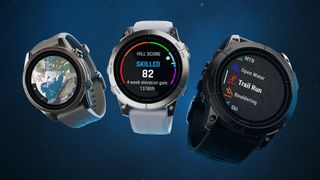
7. Garmin Epix Pro Gen 2
Our expert review:
Specifications
Reasons to buy
Reasons to avoid
We can only judge the Garmin Epix Pro Gen 2 by reputation, as Garmin has been sparing with review units for its Fenix or Epix watches. But we can't rightly name the "best" Garmin watches without discussing the most expensive options that have the best materials, software, and mapping tools. In the case of the Epix Pro Gen 2, it's like an Instinct 2X crossed with a Forerunner 965, two of the best Garmin watches smashed into one epic package.
Like the Instinct 2X, the Epix Pro was "tested to military standards for thermal, shock and water resistance," has a built-in LED flashlight, and lasts up to 31 days or 82 GPS hours (even without a solar panel). And it does this with a bright AMOLED display instead of an efficient, low-res MIP display. Also like the Instinct 2X Solar, it's painfully heavy unless you get the smallest 1.2-inch model; the largest option weighs a whopping 98g or 3.45oz.
Like the Forerunner 965, the Epix Pro Gen 2 has a ridiculous amount of software tools for runners, cyclists, winter and water sports, hiking, and so on. You'll get guidance on everything from ski dynamics to MTB dynamics and surfing. And its mapping tools are even better: you can use Garmin's Maps+ subscription for premium maps, Nextfork to see upcoming intersections and landmarks, and Skiview or golf course maps for specific sporting needs.
Generally speaking, the Epix Pro Gen 2 is the "everything and the kitchen sink" Garmin watch if you want to get every new feature, packed into a watch with premium materials. You just have to be ready to spend a healthy chunk of your rent/mortgage money for the month to afford one.
Best hybrid
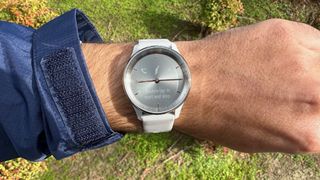
Specifications
Reasons to buy
Reasons to avoid
If you're not quite ready for a full-blown smartwatch, you might be interested in a hybrid model instead. Garmin has an impressive hybrid lineup, including the vívomove Trend and vívomove Sport, both of which resemble traditional analog watches but with hidden LCD or OLED panels in the display.
Hybrid smartwatches are made for fashion-forward folks who still want to enjoy some extra perks at a reasonable price compared to "regular" smartwatches, and the vívomove Trend is our latest favorite because it improves on our previous pick (the vívomove Sport) in a few key ways.
Available in Silver, Slate, Cream Gold, or Peach Gold bezels, the Trend is incredibly stylish compared to most Garmin watches, even if it means you miss out on a lot of functionality. As our reviewer described it, this hybrid watch is best if "you'd rather have a watch that looks stylish and feels comfortable to wear than some bulky lump on your wrist."
That being said, the vívomove Trend still packs in plenty of useful features. You get a few key activities — Walk, Run, Cardio, Bike, Strength, Breathwork, Yoga, Pool Swim, Treadmill, and Other — Sleep score, Body Battery, respiration and hydration tracking, menstrual cycles, intensity minutes, Pulse Ox, and fitness age. Or the "Garmin Starter Pack," as our reviewer dubbed this suite of tools.
It has an older Elevate heart sensor and no built-in GPS, which is for the best since the battery life is on the shorter side. But it's still far more useful than many hybrid watches without the Garmin connection, and its monocolor LCD display is surprisingly readable compared to the vívomove Sport's multicolor, low-res display.
Best for kids
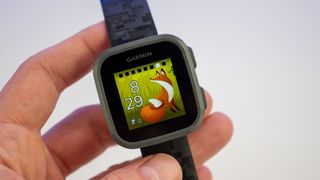
Specifications
Reasons to buy
Reasons to avoid
Garmin watch designs can be too large for many adults' wrists, let alone children's little arm bones. Most of the features are too advanced, sport-specific, or workout-specific for kids' unstructured playtime, and Garmin watches just aren't that fun-looking. But the Garmin Bounce is the exception to the rule as the best kids' smartwatch geared specifically towards fitness.
For starters, the Vivofit Jr. 3 design with 5ATM water resistance and is even rated by Garmin itself to be swim-friendly. That's a huge deal as most kids' watches simply can't withstand the water pressure from being in a pool for a long time.
The battery lasts for a solid two days and is designed to be worn at night, giving your child the ability to track their sleep and even set their own alarms if you allow that in the Garmin Jr app.
The watch even comes with educational games and daily challenges rewarding them for completing chores or 60 minutes of activity per day. You set up what chores you want them to complete and what rewards they'll receive for doing so. Our reviewer found that his kid enjoyed trying to beat his workout and sleep scores, and found it comfortable to wear while sleeping.
It's got both Wi-Fi and LTE connectivity so it can save battery when you're at home or another familiar place, all of which are configurable through the Garmin Jr. app. Garmin's LTE service is $10 per month and Garmin manages its own network with an LTE coverage map that you can check before buying.
The app is dead simple to use and doesn't hide features within sub-menus or confusing UI elements. Plus, it's even got a school mode — so they're not playing games or texting friends when they should be paying attention — a do not disturb mode, and other similar ways to configure the watch so it's a helpful tool and not a distraction.
Which of the best Garmin watches should you buy?
Why you can trust Android Central
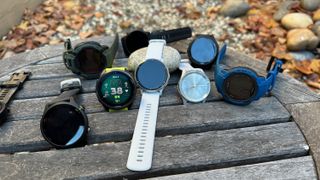
Considering how many incredible choices you have, it's challenging to crown only one of these wearables as the best Garmin watch. You can choose an Instinct for battery power, Venu for lifestyle tools, vívomove for style, the Forerunner for in-depth running and cycling tools, or a Fenix for all of the bells and whistles possible.
Since it's our job to recommend just one, we have to go back to the Garmin Forerunner 265 and 265S. Whether you're a runner, swimmer, cyclist, or triathlete, these watches have all the software tricks you'd possibly want to guide you towards your latest PR, to the point that you'll have to spend weeks finding every feature to take full advantage of it.
Otherwise, if you're looking for something more affordable, the Venu Sq 2, Forerunner 165, or Vivoactive 5 are three options that'll save you money and still give you the Garmin essentials you crave.
Be an expert in 5 minutes
Get the latest news from Android Central, your trusted companion in the world of Android

Michael is Android Central's resident expert on fitness tech and wearables, with an enthusiast's love of VR tech on the side. After years freelancing for Techradar, Wareable, Windows Central, Digital Trends, and other sites on a variety of tech topics, AC has given him the chance to really dive into the topics he's passionate about. He's also a semi-reformed Apple-to-Android user who loves D&D, Star Wars, and Lord of the Rings.
For wearables, Michael has tested dozens of smartwatches from Garmin, Fitbit, Samsung, Apple, COROS, Polar, Amazfit, and other brands, and will always focus on recommending the best product over the best brand. He's also completed marathons like NYC, SF, Marine Corps, Big Sur, and California International — though he's still trying to break that 4-hour barrier.

